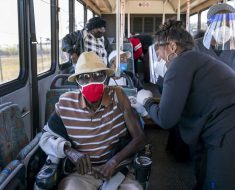WEDNESDAY, Oct. 14, 2020 — Tranexamic acid given in the prehospital setting to injured patients at risk for hemorrhage does not lower 30-day mortality, but it may improve survival in selected trauma patients, according to a study published online Oct. 5 in JAMA Surgery to coincide with the annual clinical congress of the American College of Surgeons, held virtually from Oct. 3 to 7.
Francis X. Guyette, M.D., from University of Pittsburgh in Pennsylvania, and colleagues assessed the effectiveness and safety of tranexamic acid administered before hospitalization (447 patients) versus placebo (456 patients) in injured patients at risk for hemorrhage. The analysis included patients with prehospital hypotension (systolic blood pressure ≤90 mm Hg) or tachycardia (heart rate ≥110/minute) before arrival at one of four U.S. level 1 trauma centers (Pennsylvania, Texas, Utah, and Arizona) within an estimated two hours of injury (May 1, 2015 through Oct. 31, 2019).
The researchers found that 30-day mortality was 8.1 percent in patients receiving tranexamic acid versus 9.9 percent in patients receiving placebo (P = 0.17). When adjusting for site, randomization to tranexamic acid was not associated with a significant reduction in 30-day mortality (hazard ratio [HR], 0.81; 95 percent confidence interval [CI], 0.59 to 1.11; P = 0.18). Prespecified dosing regimens and post-hoc subgroup analyses revealed that prehospital tranexamic acid was associated with significantly lower 30-day mortality. Thirty-day mortality was lower when tranexamic acid was administered within one hour of injury (4.6 percent versus 7.6 percent; P < 0.002) when stratified by time to treatment and qualifying shock severity. Thirty-day mortality was lower among patients with severe shock (systolic blood pressure ≤70 mm Hg) who received tranexamic acid versus placebo (18.5 versus 35.5 percent; P < 0.003).
“The administration of prehospital tranexamic acid during air or ground transport is safe and can be provided to patients at risk for hemorrhage,” the authors write.
One author disclosed ties to the pharmaceutical and biotechnology industries.
Abstract/Full Text (subscription or payment may be required)
Editorial (subscription or payment may be required)
More Information
Source: Read Full Article





